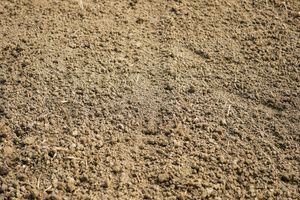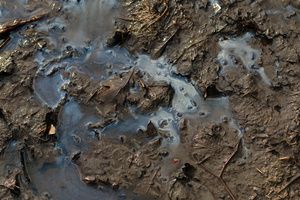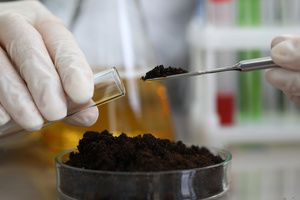Soil plays a critical role in sustaining life on our planet. It serves as a habitat for organisms, a nutrient provider for crops and other plants, and a water filter, among other essential functions. It gives us the food we need to survive, combats droughts, and protects us against flooding and other problems. However, few people understand what this vital material is made of and how it functions.
Here is a look at the five basic components of good soil.
Minerals

The biggest component of soil is minerals. This makes up nearly half of the volume of soil overall. There are two principal mineral types found in soil.
The first is primary minerals. These are soil materials that strongly resemble the parent material they are formed from, such as silt and sand. These materials are typically irregular or round in shape.
Secondary minerals are those that come from the weathering of primary materials. The weathering process releases ions and helps to create more stable forms of minerals, such as silicate clay. The big surface area of clay plays a useful role in improving a soil’s overall chemistry, as well as its ability to hold water. Moreover, the neutral and negative charges that are found in soil minerals can impact the ability of the soil to retain useful nutrients.
A soil’s texture is determined by the percentage of clay, silt and sand found within it. These identifications are performed based on size. A textural triangle is often used to identify soils in which the percentage of clay is on the left side, the percentage of silt is on the right and the percentage of sand is found on the bottom. For example, a soil that is made up of 20% clay, 40% sand and 40% silt is considered loam.
Water
The next basic component of soil is water, which can make up anywhere from 2 to 50% of the volume of soil. Not surprisingly, water plays a crucial role in helping nutrients reach growing plants and soil organisms. It also facilitates chemical and biological decomposition. The water in a soil also comes into play in the measurement known as soil water availability, which is a specific soil’s capacity to hold water for plants to use.

A soil’s capacity to hold water is mainly determined by its texture. Soil that has more smaller particles can retain more water than soil with bigger particles. Therefore, clay soil has the greatest capacity to hold water of all the soil types, while sand has the lowest water holding capacity. Keep in mind that organic matter can also impact a soil’s water holding capacity, thanks to its great affinity for water. Soils that have a greater percentage of organic material will have a better water holding capacity.
An important metric to consider when assessing a soil’s capacity for holding water is its wilting coefficient. This is the point at which water is held in the soil microscopically with too much energy for the plant to be able to successfully extract it. Water that is bound too tightly to the particles in soil cannot be extracted by plants and is unavailable for them to use.
Consider the example of clay, which tends to hold the most water of all the different textures of soil. This may sound positive on the surface, but its very fine micropores hold the water so tightly that the plants growing in clay have trouble extracting all of it. Therefore, loams and silt loams are actually more productive soil textures given their ability to hold large quantities of water that plants are capable of extracting and using.
Organic Matter
Another important component of soil is organic matter, which typically makes up 1 to 5% of soil. Derived from dead animals and plants, this matter has a significant capacity to hold water and provide plants with the elements they need to grow and thrive. Soils with a high amount of organic matter are considered among the most productive varieties in terms of facilitating plant growth.
It is also worth noting that organic matter boasts a considerable “plant available” water holding capacity. This means that it can be used to enhance the growing potential of a soil like sand that traditionally has a low water holding capacity. In fact, the percent of decomposed organic matter that a soil contains can be a better indicator of its fertility and productivity than the texture of the soil itself. However, it is important to keep in mind that the prolonged decomposition of organic materials within soil can cause it to become unavailable for plants to use over time.
Microorganisms
Microorganisms make up less than 1% of the volume of soil, despite being found in extremely high numbers. In fact, a thimble of topsoil is said to contain more than 20,000 microbial organisms. The biggest of these are nematodes and earthworms, but most of them are smaller organisms such as algae, fungi, actinomycetes and bacteria.

These microorganisms serve as the main decomposers of organic matter. They consume organic matter, along with air and water, to recycle it into humus, which provides plants with nutrients.
There are other specialized types of microorganisms that have symbiotic relationships with the plants growing in the soil. For example, nitrogen-fixing bacteria are a significant source of soil nitrogen and help enhance soil development. Another example is mycorrhizae, which are fungal complexes that develop a mutualistic relationship with the roots of the plant. The fungus gets sugar from the plant’s root, where it grows, while providing the root with water and nutrient access. Soil that does not have microbes is considered dead and is not capable of supporting plant growth.
Gasses
Gasses are another basic component of soil. Since air can technically occupy the same spaces within soil as water, it can make up anywhere from 2 to 50% of soil’s volume, much like water. Vital for microbe and root respiration, oxygen supports the growth of plants. Nitrogen and carbon dioxide are also essential for the optimal functioning of plants. This is why plants often die in soil that is flooded or waterlogged and has no room for air.
Contact the Soil Experts at Dirt Connections
At Dirt Connections, we understand the importance of soil to life on Earth. In fact, we’ve made it the cornerstone of our business. Whether you need fill dirt for a construction project or high-quality soil for your garden, we can deliver the best materials to your site in Northern Virginia. Contact us today to discuss your project.
Summary

Dirt Connections was started with one goal in mind: providing quality residential and commercial construction services to clients on time and on budget. Reach out for more information on how we can support your next project.
For your convenience our estimates are free and by appointment. Call 703-940-9949 for a free estimate today!









































